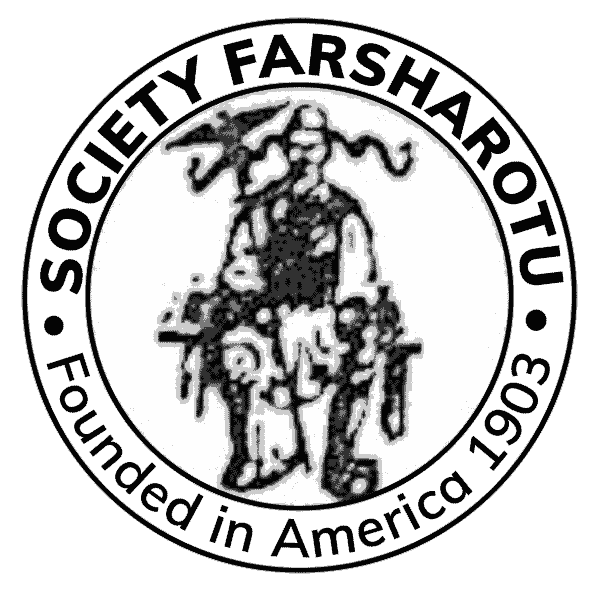Book Review: Paravulii, by Nicolae Batzaria
Paravulii, by Nicolae Batzaria. Editura Cartea Aromana, 1989. $18., paperback.
We Aromanians have a very small body of literature, most of which appeared under the auspices of the short-lived Rumanian nationalist movement (1860-1945). If I had to pick one out of this handful of writers to reprint in 1989, it would be Nicu Batzaria, for he is probably the only one of them to have achieved a modern sensibility. The rest often were content to write sentimental odes to the old sheepherding and mountain way of life, and such work holds very little appeal in the late 20th century. Batzaria, however, was far from a 19th-century Romantic; the wellspring that feeds the river of his poetry is not sticky-sweet emotion but a fast-paced, rollicking humor.
There is something amazing in this achievement. The hallmark of our pre-literate folk-culture (like most others) is that it had a genre of serious songs, poems, and stories and a genre of comical ones. For some reason it was mainly the serious genre that our own literary figures took seriously — until Nicu Batzaria. Batzaria obviously reveled in the colorful, humorous aspect of Aromanian life, which doesn’t always show us in a good light because it is crude, rude, and sometimes lewd, and he decided it was worth his effort to try to convey some of that humor to a modern audience. A culture that cannot laugh at itself cannot change, and a culture that cannot change cannot survive long in this fast-paced world. Nicu Batzaria was one writer who tried to preserve our old tradition (and saving grace) of laughing at ourselves.
Despite all this, however, there is much to criticize in this particular edition. Though it is published in America, most of the text is written in Aromanian, which most members of our community no longer understand without at least an accompanying translation to help them along. There is no English translation.
Further, the alphabet used for the poems is the newfangled one created recently by a few Aromanian intellectuals in Germany and it is unfamiliar to the vast majority of our people. It was created in an effort to show that the Aromanians are different from the Rumanians. It is easy to show these differences without going so far as to create a new alphabet; at the same time, the great majority of our literature was written with the Rumanian alphabet and no amount of tampering or rewriting or regret is going to change that fact. What was written in the Rumanian alphabet should probably be respected and left as it was written; as for what alphabet present and future Aromanians will use, well, that is a matter to be decided by the majority of them when they see fit to do so.
The only English in this book is stilted and not idiomatic; it is to be found in the editor’s brief introduction, which includes a historical preface and an explanation of the editor’s decision to use a new alphabet. But whereas the alphabetical essay is rather helpful, the preface is quite disappointing. The editor, Dr. Tiberius Cunia, is a specialist in forestry — a far cry from linguistics and history. When a specialist writes in another field, he obviously runs the risk of making errors. Dr. Cunia prepares us for linguistic errors by acknowledging that “Not being a linguist myself, I might have made wrong decisions…” But we receive no such warning concerning historical errors.
In a mere two pages, the preface commits two major historical blunders, errors so basic that it is hard to imagine how they might be excused. The first is when Cunia asserts that Batzaria’s home town of Krushevo (now in Yugoslavia) was “inhabited exclusively by Aromanians.” This is part of the mythology fed to a Rumanian-educated generation that has rarely set foot in our actual homeland, much less conducted serious research on the subject. Even Metsovo (Aminju in our language), the prototypical Vlach town which is often touted as “exclusively Vlach,” has a community of gypsies who — though they have resided there from time immemorial and speak Aromanian fluently — do not consider themselves Vlach.
In the case of Krushevo, Dr. Cunia could easily have gotten his facts straight by consulting Dr. Zbigniew Golab’s 1984 book, The Aromanian Dialect of Krushevo. Any scholar who seeks to write about the Vlachs should be familiar with the basic books written about them, and Golab’s book is certainly basic, especially if one wishes to learn about Krushevo. In its pages we find that Krushevo, since its founding in the 18th century, has had a settlement of Albanians; they were soon joined by Slavs. In Batzaria’s day, the population was roughly one-third Slavic and Albanian and two-thirds Aromanian.
The other major error is when Cunia asserts that in the Balkan states formed upon the demise of the Ottoman Empire (1918), the Aromanians lost “all their cultural rights.” In fact, Bulgaria, Yugoslavia (then known as The Kingdom of the Serbs, Croats, and Slovenes), and Greece signed an agreement with Rumania in 1913 to allow schools and churches for the Vlachs in order to preserve their culture. While Bulgaria and Yugoslavia did not live up to their end of the bargain, Greece did, and the schools and churches in Greece lasted until World War II, when the Rumanian government itself decided to discontinue them.
These errors are serious, and combined with the strange new alphabet and the lack of translations, they take away enormously from the value of this edition. Yet they do not negate it completely. For future editions, I would advise Dr. Cunia to locate a second editor, one who specializes in linguistics and history and who can write and translate well in idiomatic English. Such knowledge and abilities, combined with Dr. Cunia’s burning desire to publish Aromanian literature at any cost, should result in some useful editions of the works of our favorite writers.


Responses